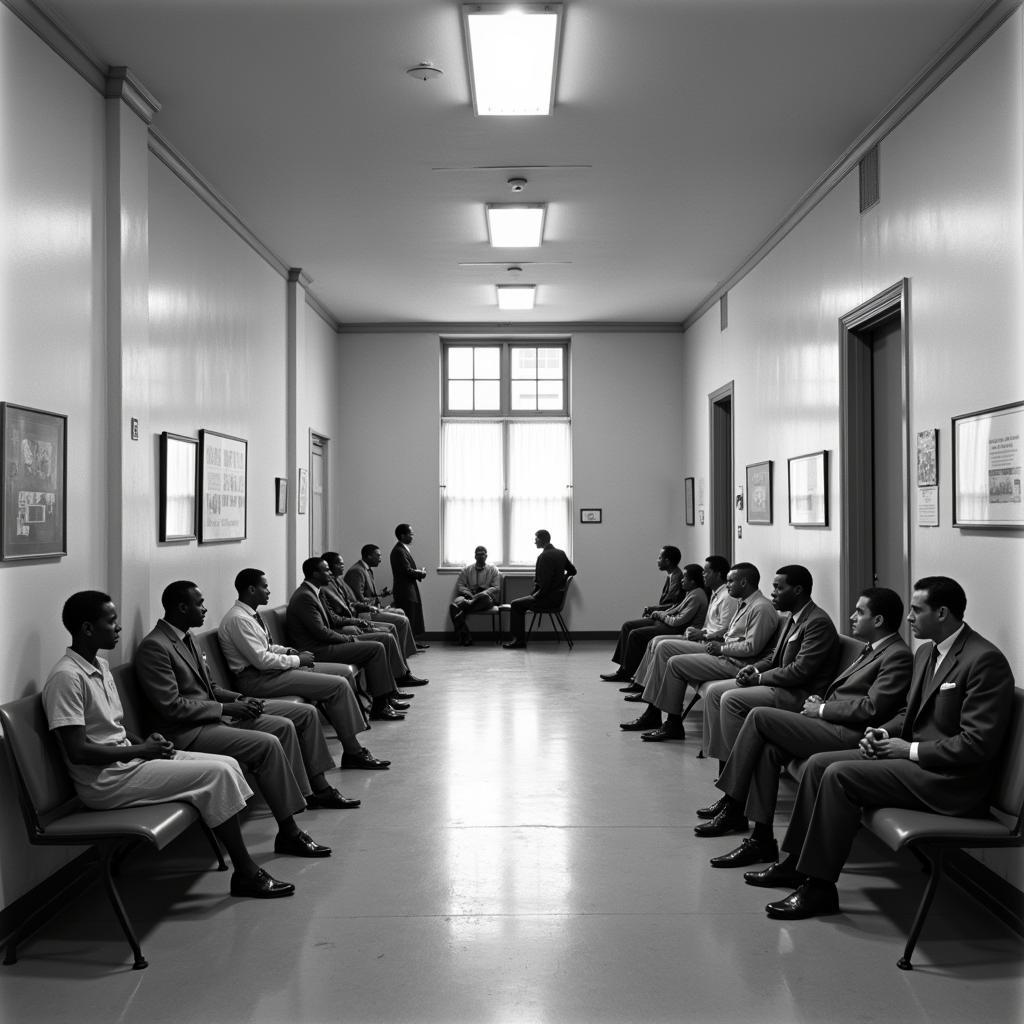African Black Wood Furniture: A Rich History of Beauty and Craftsmanship
African Black Wood Furniture is prized worldwide for its rich, dark hues, exquisite grain patterns, and durability. More than just furniture, these pieces are a testament to Africa’s rich history of craftsmanship, artistry, and cultural heritage. For centuries, skilled artisans have transformed this precious wood into stunning furniture pieces, each telling a unique story passed down through generations.
The Allure of African Blackwood
What makes African blackwood furniture so sought after? It starts with the wood itself. African blackwood, scientifically known as Dalbergia melanoxylon, is a dense and durable hardwood native to the savannas of sub-Saharan Africa. Its slow growth rate – sometimes taking over a century to reach maturity – contributes to its density and fine texture, making it highly sought after for high-end furniture making.
Beyond its physical properties, African blackwood holds cultural significance. In many African cultures, the wood symbolizes strength, longevity, and prosperity. It is often used in ceremonial objects and musical instruments, adding to its allure and value.
From Forest to Furniture: The Craftsmanship Behind the Masterpieces
Creating African blackwood furniture is a labor of love, requiring remarkable skill and precision. Artisans, often trained from a young age, use hand tools and traditional techniques passed down through generations to shape and carve the wood.
The process begins with selecting the perfect piece of wood, carefully considering its grain pattern and potential. Then, using a combination of hand saws, chisels, and carving knives, the artisan shapes the wood, bringing the design to life. The intricate carvings, often inspired by nature, cultural motifs, or ancestral stories, are a testament to the artisan’s patience and artistry.
The final stage involves sanding and polishing the wood to a smooth, lustrous finish. This meticulous process enhances the natural beauty of the wood, bringing out its deep, rich hues and highlighting the intricate details of the carvings.
Styles and Designs of African Blackwood Furniture
African blackwood furniture encompasses a wide range of styles and designs, reflecting the continent’s diverse cultural heritage. Some popular styles include:
- Traditional African: These pieces often feature bold geometric patterns, intricate carvings of animals or ancestral figures, and rich symbolism rooted in local traditions.
- Colonial: Influenced by European design aesthetics, these pieces often incorporate elements of Victorian, Art Deco, or other European styles, while still retaining a distinctly African feel.
- Contemporary: Modern African blackwood furniture blends traditional craftsmanship with contemporary design elements, resulting in unique and stylish pieces that seamlessly integrate into modern homes.
Caring for Your African Blackwood Furniture
Investing in African blackwood furniture means acquiring a piece of art that will last for generations with proper care. Here are some tips for preserving its beauty:
- Dust regularly: Use a soft, dry cloth to remove dust and prevent scratches.
- Avoid direct sunlight: Prolonged exposure can fade the wood’s rich color.
- Maintain humidity levels: African blackwood is sensitive to changes in humidity, which can cause cracking or warping.
- Use coasters and placemats: Protect the surface from heat and moisture damage.
- Polish occasionally: Use a high-quality furniture polish specifically designed for wood to maintain its luster.
The Future of African Blackwood Furniture
The demand for African blackwood furniture continues to grow, driven by a renewed appreciation for handcrafted, sustainable pieces with a story to tell. However, the future of this precious wood is uncertain. Overexploitation and habitat loss have led to concerns about the sustainability of African blackwood.
Efforts are underway to promote sustainable harvesting practices and reforestation initiatives to ensure the long-term survival of this valuable resource. By supporting artisans who prioritize sustainability and ethical sourcing, we can help preserve the legacy of African blackwood furniture for generations to come.
Conclusion
African blackwood furniture represents a captivating blend of natural beauty, skilled craftsmanship, and cultural heritage. Owning a piece means possessing a tangible link to Africa’s rich history and artistic traditions. As we admire the elegance and durability of these pieces, let us also remember the importance of sustainability and ethical sourcing to ensure that future generations can continue to cherish the beauty of African blackwood.

